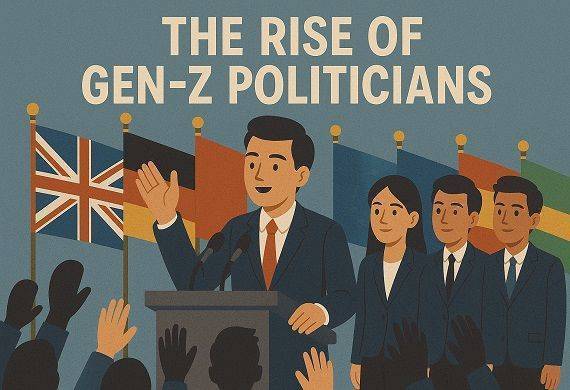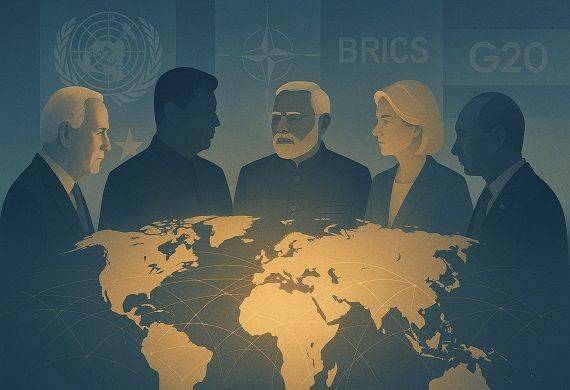Modi's Hopes for India-China Thaw Amid Geopolitical Uncertainty
By Global Leaders Insights Team | Mar 24, 2025
 copy.jpg)
In a recent interview, Prime Minister Narendra Modi expressed optimism about India's relationship with long-time rival China, stating that normalcy had been restored along the contested India-China border and emphasizing the need for stronger ties.
These remarks are notable, as tensions have remained high since the deadly border clash in the northern Ladakh region in 2020, the most severe since the 1962 war.
Chinese foreign ministry spokeswoman Mao Ning expressed appreciation for Modi's words and declared that "the two countries should be partners that contribute to each other's success". Modi's pitch for closer partnership isn't actually as big of a leap as it may seem, given recent improvements in bilateral ties. Serious work lies ahead for bilateral relations and, indeed, for global geopolitics if any hope of true rapprochement is to be realized.
Bilateral trade still remains buoyant, with China emerging as the largest trading partner of India even after the clash in Ladakh. Countries also cooperate in multilateral platforms like BRICS, which is an alliance of major emerging economies, and the Asian Infrastructure Investment Bank. The synergy of shared interests thus further involves promoting non-Western economic models, combating Islamist terrorism, and generally opposing what they consider US-led moral crusades.
While their ties have come down to the lowest point in history due to the Ladakh clash, the two militaries have managed to sustain high-level talks leading to a resolution in October to again restart border patrols. During the same month, Modi-and President Xi of China met at a BRICS summit in Russia, committing to further cooperation. In January, both sides agreed to resume direct flights.
There are still challenges being faced in the relationship, though.
Each wields a considerable military sinew on behalf of the other side's principal adversary- America for India and Pakistan for China.
India's Kashmir policy challenges while further undermining India's global power ambitions by denying it access to key groupings like the Nuclear Suppliers Group and permanently blocking its seat at the UN Security Council.
Also, China has a significant naval presence, which can be seen-the only overseas military base anywhere built by China sits within India's wider maritime region.
India flatly contradicts the Belt and Road Initiative as it traverses territory India claims as its own.
At the same time, India's relations are waxing with Taiwan, which believes itself to be a breakaway province. It also houses the Dalai Lama, the exiled Tibetan leader, viewed by Beijing as a threat to its territorial integrity.
The sale of supersonic missiles to Southeast Asian countries may be under contemplation by India possibly to act against China in the South China Sea. India taking part in global forums such as the Indo-Pacific Quad and the Middle East-Europe Economic Corridor is interpreted by China as a challenge against its influence.
There are several key indicators to monitor for a clearer understanding of the future direction of the relationship.
One of them is border discussions. Fifty thousand square miles of the 2,100-mile (3,380 km) frontier, an area roughly the size of Greece, remain disputed.
That border situation will be the ultimate litmus test of the health of the relationship. The Ladakh clash created suspicion, but last year's agreement on border patrol quelled much of it. If the two sides can go on to implement other confidence-building measures, it would send a very clear positive signal on relations.
Future high-level meets will also be crucial. If Modi and Xi meet this year, when both value personal diplomacy, the earlier momentum in bilateral ties would be heightened even further. They will have opportunities to meet on the sidelines of the upcoming BRICS summit in July, the G20 later in November, and at the Shanghai Cooperation Organization (SCO) summit later in the year.
Another such important indicator is Chinese investment which could provide essential funds for Indian key sectors ranging from manufacturing to renewables while also bringing down the $85 billion trade deficit with China.
Every such increase in investment will bring India its much-desired economic boost and increase India's shooting of access to the world in the name of access to the world's fastest-growing major economy. Greater commercial cooperation would also provide stronger reasons for managing the broader conflicts.
Regional and global developments will also be key to watch.
.jpg)



